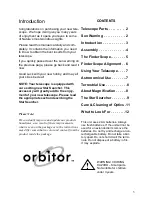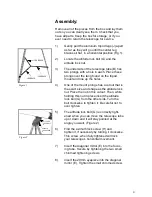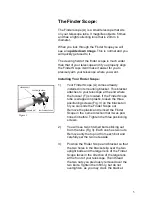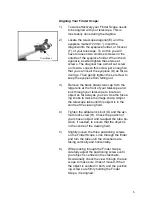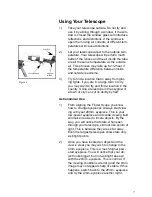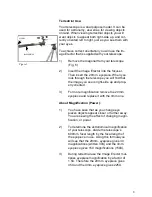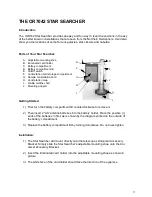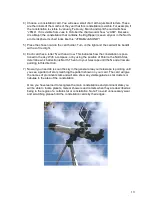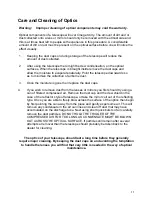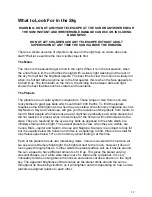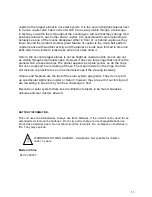
12
What to Look For in the Sky
WARNING: DO NOT AIM YOUR TELESCOPE AT THE SUN OR ANYWHERE NEAR
THE SUN! INSTANT AND IRREVERSIBLE DAMAGE CAN OCCUR, INCLUDING
BLINDNESS!
DO NOT LET CHILDREN USE ANY TELESCOPE WITHOUT ADULT
SUPERVISION AT ANY TIME THE SUN IS ABOVE THE HORIZON.
There is a whole universe of objects to be seen in the night sky so where does one
start? Well let’s examine the most visible objects first.
The Moon.
The moon is the easiest target to find in the night. When it is in the full position, when
the entire face is lit, then it bathes the night with a silvery light washing out the rest of
the sky from all but the brightest objects. The best time to view the moon is actually not
when it is full but rather anytime up to the first quarter, this is when the face appears to
be half lit up. The terminator on the moon, the dividing line between dark and light,
shows the best features such as craters and mountains.
The Planets
The planets are our solar system companions. These range in size from moon size
rocky bodies to giant gas balls which could hold 1000 Earths. To find the planets
requires some information as to when they are visible. An astronomy magazine such as
SkyNews or Sky and Telescope, will give you the locations of the planets from month to
month. Most people who have looked up at night have probably seen some planets but
did not realize it. A planet, when it is well clear of the horizon will not twinkle as do the
stars. They are resolved by the eye as tiny balls as opposed to the stars which are
infinitely small points of light. The easiest planets to view, when they are visible, are
Venus, Mars, Jupiter and Saturn, Uranus and Neptune. Mercury is an object to look for
but it is usually below the horizon and often is a challenge to find. Pluto is too small for
most telescopes below 10" so do not worry about finding it at this time.
Each of the planets has its own interesting views. Venus is covered with clouds so all
we see is an extremely bright light, the brightest next to the moon, however it like our
moon goes through phases. In other words the planet surface will, as it travels around
the sun, appear to have different amounts of it lit up. This gives the planet varying
crescent shapes, as if a bite were taken out of it. Mars is the red planet. It is very
noticeably red when rising above the horizon and stands out like a beacon in the night
sky. The apparent brightness of Mars varies as the planet orbits around the sun so
throughout its time being visible to us it will brighten and dim depending on how our two
planets are aligned relative to each other.



